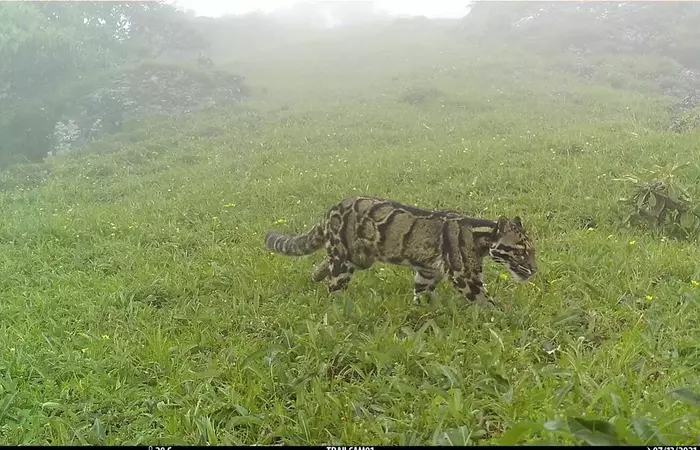A team of researchers has, for the first time ever, captured on camera photographs of clouded leopards at an elevation of 3,700 metres in a forest along the India-Myanmar border in Nagaland. This is reported to be one of the highest altitudes where the animal has been sighted in the world until now.
The researchers, led by the Delhi-based non-profit Wildlife Protection Society of India (WPSI), recorded camera trap images of the clouded leopards in the community forest of Thanamir village in eastern Nagaland’s Kiphire district. Nagaland’s highest peak, Mount Saramati is also located in the forest which stretches across 65 sq km.
The findings have been published in the Winter 2021 issue of the Cat News, the IUCN/Species Survival Commission (SSC) Cat Specialist Group’s biannual newsletter.
The tree-climbing clouded leopard, a medium-sized wild cat, is categorised as ‘Vulnerable’ under the IUCN Red List of Threatened Species.
According to experts, since clouded leopards are known to inhabit low elevation evergreen rainforests, the sighting at such a high altitude above the tree line marks a new discovery.
Known as Khephak in the local Chirr dialect, the clouded leopard is the largest wild feline in the area in the absence of Tigers and common leopards, which are regionally extinct.
The team, which includes local villagers, placed over 50 camera traps in the village community forest — first between January and June, 2020, and later between July and September, 2021.
“In total, we have evidence of at least two adults and two cubs. Two distinct individuals were photocaptured at a camera placed above the tree line at 3,700 m close to the summit of Mt. Saramati. Another individual was photo captured at 3,436 m,” according to the peer-reviewed publication, authored by Ramya Nair, Alemba Yimkhiung, and Sahil Nijhawan among others.
Nijhawan, a conservation anthropologist who works in Arunachal Pradesh, and is advisor to the WPSI initiative, said the capture was especially significant because the population included breeding individuals.
“They are residents of the area, and are reproducing there, which indicates that there is enough food and forest cover for them to do so,” he said, adding that little is known about the “stunning and beautiful” clouded leopards, which are usually found in tropical rainforests, “full of trees”. “But we have found them at heights above where the trees end,” The Indian Express cited him as saying.




















